RB26DETT – Nissan’s Ultimate Engine?
Nissan’s RB26DETT engine is a masterpiece, renowned for its robust design and exceptional performance capabilities. We cover everything RB26 in this guide.
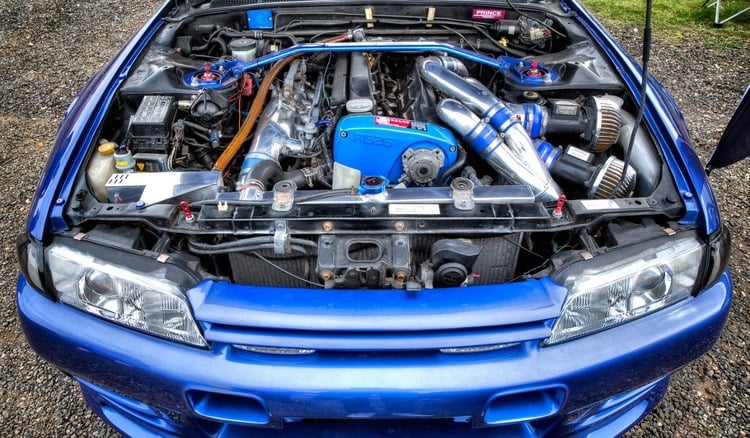
Jump To Section
Introduction
Nissan’s high-performance subsidiary NISMO produced the RB26DETT, a race bred 2.6-liter inline-six DOHC engine with dual overhead camshafts. Originally used in the Nissan Skyline R34, R33, and R32 GT-R, it has become a highly coveted engine for both automotive and tuning enthusiasts due to its extreme power potential, which we’ll delve into later.
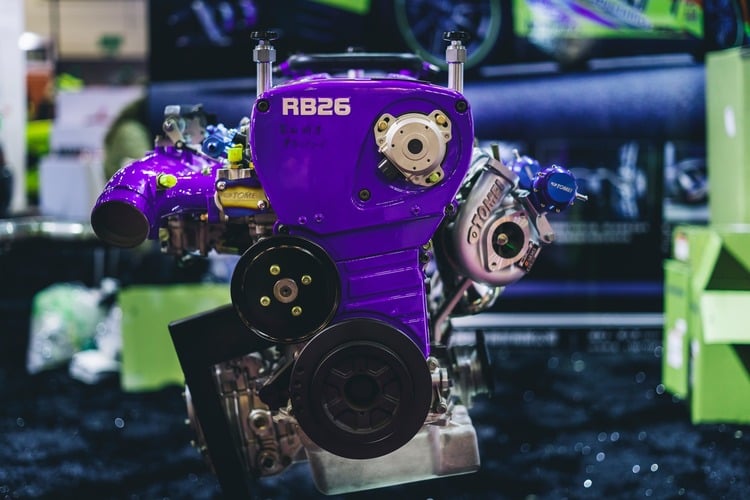
The RB26DETT is celebrated for its excellent reliability, high-revving capabilities, and significant tuning potential, thanks to its twin turbo setup that delivers smooth power and impressive performance figures.
With its lightweight aluminum block and various aftermarket performance parts easily available, the RB26DETT has gained popularity for engine swaps and custom builds. It’s an excellent choice for anyone seeking high-performance power, whether you’re a racing enthusiast or simply looking to create a potent street machine.
An Insight on The RB26DETT
Most Nissan Skyline GT-R owners and fans of the car consider the engine to be its standout feature. The RB26DETT has a legendary reputation and is known as one of the most tuneable engines worldwide. GTR fans can find some outstanding wallpapers on Drifted.
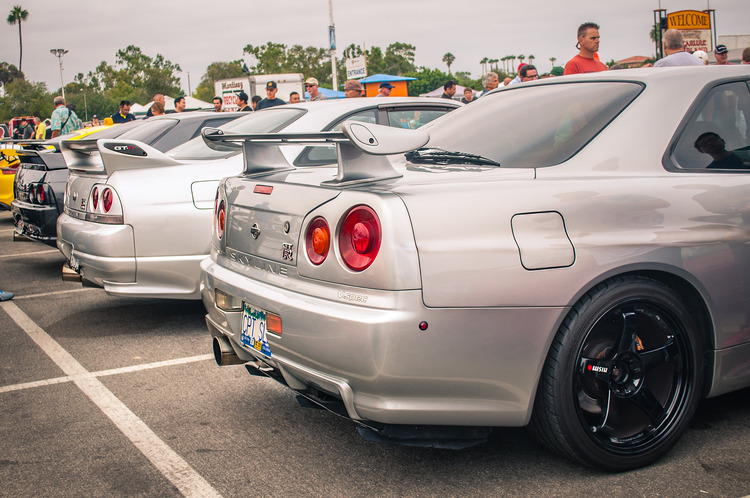
The RB26DETT is equipped with ceramic impellers in its turbos, making it a fully turbocharged engine.
Its displacement is only 2.6 liters, with a compression ratio of 8.5:1, resulting in low torque at low revs.
However, the over-square configuration of the cylinder bores (86.0 mm cylinder bore and 73.7 mm piston stroke) and the inherent balance of the inline-six layout enable high revs.
The low compression ratio can accommodate high turbo boost, and an aftermarket cylinder head gasket can further decrease the ratio.
Due to the nature of turbocharging, high torque can only be achieved at high RPM, as turbos cannot provide much boost at low RPM. When combined with high revs, this results in high horsepower.
Boosted air is fed to the engine from the intake plenum chamber, which can efficiently handle up to 900 horsepower based on experience.
The RB26DETT engine features an individual throttle body with a dedicated throttle plate for each cylinder, resulting in an instant and sharp response to the throttle.
In addition, the engine is equipped with coil-on-plug ignition coils for each cylinder, boosting the ignition system’s efficiency in high boost pressure.
While the engine block is made of cast iron, making it heavier than most modern aluminum-alloy blocks, it has its own set of benefits. The cast-iron block provides excellent stiffness, high durability, and exceptional resistance to rubbing wear, making it ideal for cylinder walls.
The RB26DETT prioritizes reliable performance at high boost and revs, even if it means adhering to some old-fashioned techniques.
Despite its strengths, the RB26DETT is not without flaws. Its cast-iron block adds significant weight and limits heat dissipation.
Additionally, while the stock internals boast racing engine features, they are not as robust and balanced as they could be.
Nissan Skyline GT-RS
To truly compete against racing cars with larger engines, the Nissan Skyline GT-RS requires proper tuning and skillful driving.
While it may lack in torque at the bottom and midrange of the powerband, this can be compensated for at the top end with the right modifications.
In order to surpass the big-engine monsters of the GT2 and GT3 classes, the GT-R must generate at least 600 horsepower and 487.5 lb-ft of torque output, preferably around 5200-5500 rpm, which is achievable with an RB26DETT engine running 1.5 bar of boost pressure.

Beyond modifications, a GT-R driver must also possess the skills to effectively utilize the car’s potential, such as downshifting in corners to keep the engine revving.
While this technique may not be ideal for endurance racing, the GT-R has still been dominant in the Super Taikyu endurance series and relatively successful in the grueling 24-hour Nürburgring race.
For car enthusiasts in the United States, the Japanese Domestic Market (JDM) Nissan GT-R is available in American specifications, offering a taste of the GT-R’s legendary performance.
RB26DETT Mods, Upgrades, and Tuning
The RB26DETT engine is managed by a sophisticated engine control unit (ECU). However, while the aftermarket offers different chips and whole ECU units for upgrading engine management, the RB26DETT is not the pinnacle of automotive engine technology.
Unlike most modern engines, the RB26DETT does not have hydraulic valve lifters in the valvetrain to provide quietness and smoothness. Instead, it uses solid lifters that are noisy but precise in valve actuation, making them more reliable for high engine power output and high revs, which is why racing engines prefer this type of valves actuation.
Additionally, the RB26DETT uses a timing belt rather than a timing chain, which is common in modern engines. While a chain is heavier and requires lubrication, accurate tension adjustment, and vibration damping, a belt is easier to adjust for proper tension.
Chains also add more friction, which can cause issues when the engine works hard and revs fast.
Despite these drawbacks, the RB26DETT has become popular among tuners due to its reliability, precision, and ability to handle high engine power output and high revs. The engine is a testament to Nissan’s engineering prowess and remains a highly sought-after power plant for enthusiasts around the world.
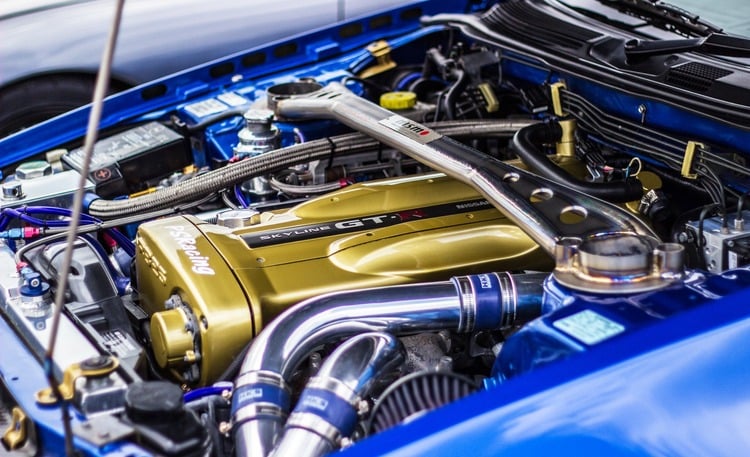
Minor mods, such as improving the exhaust, air filters, ECU, and boost control, can easily boost the RB26DETT engine to 400+ bhp. The RB engine can be tuned to produce an astonishing 1500+ bhp; however, tuners must be careful to maintain the engine’s reliability, which is crucial for high-performance engines.
This is where expert tuners separate themselves from those who claim to be RB26 specialists.
The RB26DETT engine is so revered as an inline-six powerhouse that tuners have started installing it in other high-performance cars. For instance, many Toyota Supras, Nissan 300ZXs, and 350Zs have been retrofitted with upgraded RB26DETT engines.
Kazuhiko Nagata, the president of the renowned Japanese company Top Secret, installed an RB26DETT engine in his Z33 project car because he considers the RB series engines to be more reliable for high horsepower and better sounding than a VQ engine.
Engineers at Option Motorsport used fiber-optic cameras to examine the RB26 engine and found that the crankshaft began to visibly shake above 7200 rpm. Each engine is unique and has its history, but this observation suggests that the safe RPM limit for RB26 engines should be lowered to 7000 rpm.
This means that one of the main advantages of the RB-series motors—the high rev limit—cannot be used to increase the horsepower output.
For those looking to upgrade the RB26DETT engine, it is crucial to understand the limitations and weaknesses of the stock components. While minor modifications such as upgrading the exhaust, air filters, ECU, and boost control can increase the engine’s output to 400+ bhp, to achieve 500-wheel hp and more, practically everything needs to be upgraded, including the engine internals and bolted-on components.
However, even after extensive modifications, the low-displacement engine equipped with bigger turbos still lacks the necessary torque at low and mid-range rpm, making it a disadvantage for both street driving and racing. Additionally, the RB26DETT does not have variable valve timing, making the low rpm torque issue even more significant.
One way to address this lack of low-end torque is by increasing the engine’s displacement. For instance, an increase from 2.6 to 2.8 liters significantly improves the engine’s powerband. Moreover, it is essential to upgrade components that are typically weak in the RB26DETT engine, including the oil pump, pistons, and con rods.
Another limitation of the RB26DETT is the absence of variable valve timing, which can be addressed with an HKS V-cam variable-in-take-valve timing device, improving the torque curve in the low and mid ranges.
Even with all these upgrades, it is still challenging to match the performance of big high-torque engines such as the Viper GT-S. The Falken GT-R’s performance at the 24-hour Nürburgring race and the R34’s failed attempt to participate in the SCCA-Pro World Challenge GT Cup in the USA in 2006 highlight this fact.
Therefore, to ensure reliability, it is essential to install an aftermarket crankshaft damper to reduce torsional vibration in the crank and exchange the stock crank and other internals for balanced ones from the aftermarket.
RB26DETT Reliability
Upgrading the RB26DETT engine to achieve high power output can bring up some potential problems, such as fuel consumption, engine overheating, and reliability issues. These concerns can arise from a high boost setting or a poor mapping job. Even after professional tuning, the RB26DETT is at risk of failure if it’s boosted to around 30 psi and revved to 8000 rpm or higher. This raises the question of whether it’s even legal to import a GTR.
It’s important to note that the metaphorical “time bomb” doesn’t necessarily mean the engine will explode, although that is a possibility. Rather, it suggests that there’s a high chance of engine failure and that the RB26DETT’s overall reliability is lower compared to a tuned high-torque engine with a larger displacement, which won’t need to work as hard to achieve the same output and has a flatter torque curve.
On the other hand, larger displacement engines tend to lose torque at the top end of the powerband, where the upgraded RB26DETT excels. However, reliability and fuel consumption become issues at this point. This is why Porsche increased the engine displacement from 2850 cc in the 959 to 3600 cc in their more modern Turbo and GT2 models.
The lubrication system of the RB26DETT is another area of weakness, with oil pump failure being a possibility. Therefore, it’s a priority to switch to an aftermarket oil pump, such as the one from NISMO, when upgrading the engine.
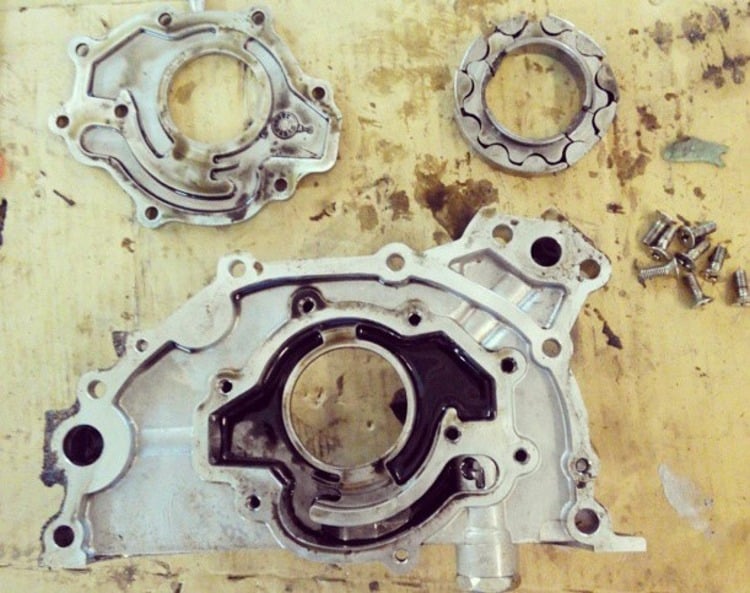
And this common oiling problem goes even further – sudden drops in oil pressure may develop during high acceleration loads, making oil pump extension drives, like the one from Trust, essential. Installing an oil cooler is also mandatory. Finally, it’s crucial to change the oil after hard driving, such as track days, and to stick to a regular oil change interval.
The RB26DETT inline-6 engine features two exhaust manifolds that divide its cylinders into two banks. However, the second bank of cylinders faces some challenges, including receiving less air due to its location at the end of the intake manifold and experiencing higher coolant temperatures since the coolant flows first to the other bank of cylinders.
To cool down the 5th and 6th cylinders, it may be necessary to add more fuel. This can be achieved by upgrading the fuel system with better components such as fuel pumps, fuel rail, swirl tank, and injectors. However, failure to manage heat in the engine bay, including the air intake system, can result in a knocking sound.
Heat management of the air intake system involves reducing the intake air temperature through the use of a larger and more efficient intercooler, as well as modifying the air intake scoop and piping.
It’s worth noting that every additional degree of air temperature that enters the combustion chamber reduces the horsepower output. Installing air filters without an air box or a screen separating them from the engine bay is not recommended.
To ensure that there is always an excess source of fresh air, it’s advisable to have a ram effect if possible. The stock air outlets from the RB26DETT turbos are not optimally designed, particularly the air outlet for the second turbo, which gets hot due to its proximity to the first turbo’s exhaust. Read our guide on GTR exhausts for more tips.
For high output tuning, relocating the turbos on top of the engine bay, replacing the exhaust manifold and air piping, and installing proper thermoinsulation are crucial steps to take.
To manage heat in the engine bay, it is essential to thermoinsulate under-hood parts. The power steering reservoir and pipes, especially the high-pressure pipe that passes near the turbos, must be thermoisolated. Installing an aftermarket power steering fluid cooler can also help. Similarly, the brake master cylinder and ABS actuator should be separated from the engine bay by a thermoshield.
Proper ventilation of the under-hood space can reduce the chances of knocking and thermal oil break-down. In a stock GT-R, the airflow is directed from the front opening and, in the case of the R34 V-spec II, from the hood NACA duct, to the wheel arcs and under the car, which is not the most efficient path.
The NISMO hood with GT500-type ventilation offers a much more efficient ventilation solution by allowing air to flow from the front opening and out through the hood on the top of the car.
However, for even better results, additional ventilation ducts in the front fenders and in the hood close to the firewall, especially on the left side where the turbos are located, are highly recommended. Some aftermarket hoods have an intake scoop on top, which provides an additional air flow through the under-hood space.
Despite its weaknesses, the RB26DETT is an excellent engine. With proper upgrades, including high-quality forged and balanced engine internals and upgraded bolt-on parts, it can be reliable with medium to high engine lifespan while still producing 700+ horsepower. It’s undeniable that the GT-R legend owes a great deal to the RB26DETT.
Conclusion
In conclusion, the RB26DETT engine is an engineering marvel that has been a formidable and reliable power source for decades. Its high-revving capabilities, smooth power delivery, and impressive performance figures have made it an ideal choice for a wide range of applications.
The RB26DETT’s versatility is evident from its use in both racing and street driving, where it has proven to be a reliable and efficient engine that can be tuned to deliver performance that exceeds even the most demanding expectations.
Its enduring popularity and timeless design are evident from the fact that it is still in high demand today.
Whether you’re a Nissan fan, a racing enthusiast, or simply seeking a powerful engine, the Nissan RB26DETT motor is an excellent choice that can provide you with the performance, reliability, and excitement that you seek.
Its legendary status and impressive track record make it a highly coveted engine that continues to attract attention and admiration from car enthusiasts worldwide.
If you are looking to snag your own RB26 to fit into your project car, then check out JDM Distro, a reliable JDM parts importer.























